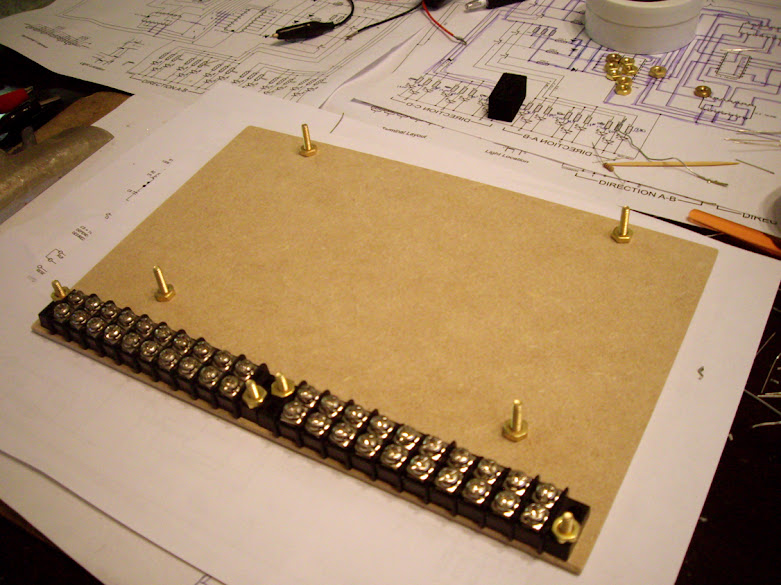Traffic Lights Part II - Traffic Light Controller
A note about this post: I do not take any credit for the design of this circuit. I instead turn the spotlight on Rob Paisley and his website, who has without a doubt spent an unimaginable amount of time, effort, and talent developing dozens of model railroad circuits that ultimately make our layouts achieve things we never thought possible. The intent of this post is to only describe my experience of applying and constructing Rob’s designs on my own layout. Please visit Rob’s website, which has a wealth of wiring information and useful model railroad circuitry.
-Ty















7 comments
Nice job! This is an example of a really nice prototype build. Did you breadboard the circuit first before soldering it up or did you go "whole hog" and solder it in per the schematic?
ReplyDeleteI'm an electrical engineer by trade and someday, when I have the room, I'd like to build up a layout. I was surfing about model trains and found your blog.
Please forgive me if, deep down, you are an electronics expert, but have you heard about the Arduino? It's an easy to use microcontroller platform that would allow you to control a circuit such as this with a custom program downloaded into it. It runs about $30 for the board and it is very easy for newcomers to electronics/microcontrollers to program and use.
However, your sequencer circuit is great. For as much as I like to see all of the newcomers who are jumping right into microcontrollers, it is heartening to see someone like yourself doing it "the old fashioned way" with discrete chips.
Hey Bill, thanks for the comment. For the circuit, I built the entire thing "whole hog". I've explored options of pre-made and/or programmable devices, however built this circuit just to see if I could actually do it!
DeleteI used an arduino to develop my traffic lights and it's pretty cheap, The computer board costs less than $10.00 and the program is easy to develop. The computer is totally underutilized but works very well.
DeleteI also used an Arduino to run my turntable using a Walthers manual 90ft with a NEMA 17 stepper motor powering it. This way I can select each track position and angle with a simple step number (1 - 3500) and am not limited to the Atlas 11 degree increments.
NCERT provides various study resources to the students studying in different classes. Going through these study resources without fail helps the students in NCERT 8th Class Syllabus understanding the details of the course, enabling them to be prepared throughout the academic year. Exam preparation, without a doubt, is much more convenient with these NCERT resources.
ReplyDeleteBoard of Secondary Education, Assam (SEBA) Going to Conducts 6th Class Examination 2023, Every year more than 4 to 5 Lakhs of Students Appeared in this Exam, Assam 6th Class Exam Dates Expected to be Announce Month of January. SEBA 6th Class Model Paper Students Alert this Time High School (6th) Study Materials and Plans a Strategic Study Routine to Score well in the Exam. Good News Assam Students who are Searching for the Assam 6th Model Question Paper 2023 SEBA Board has been Uploaded the All Subject Wise Download to the Students who are Going to Appear in the Board Examination this year.
ReplyDeleteThhank you for sharing
ReplyDeleteI find it impressive how much thought goes into designing intricate model railroad circuits.
ReplyDelete